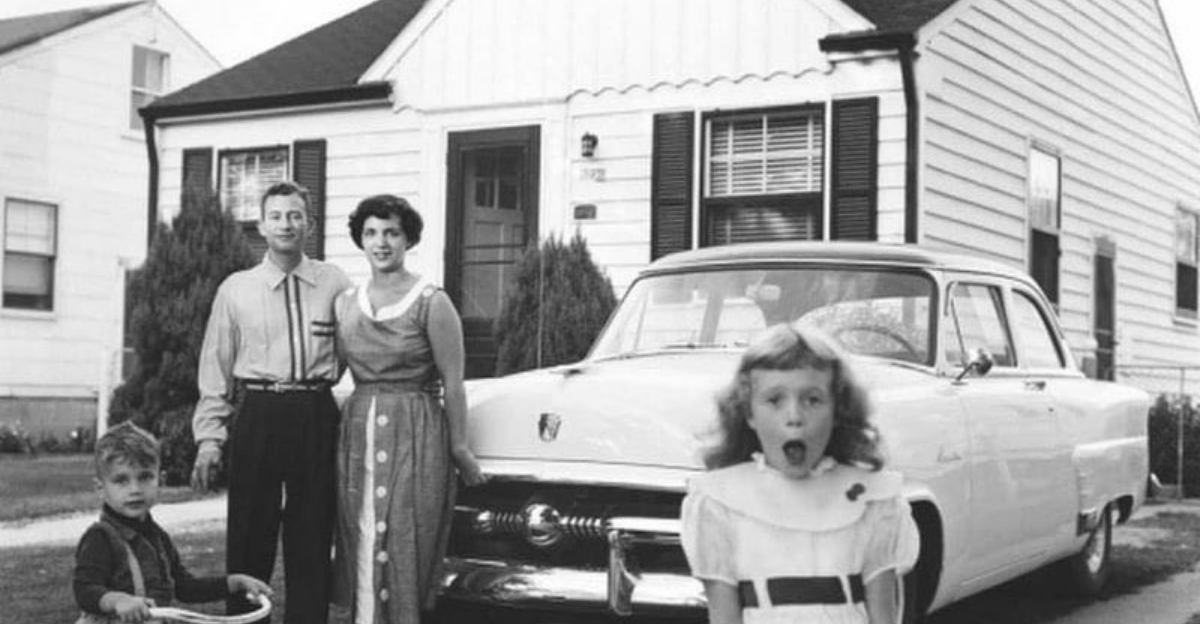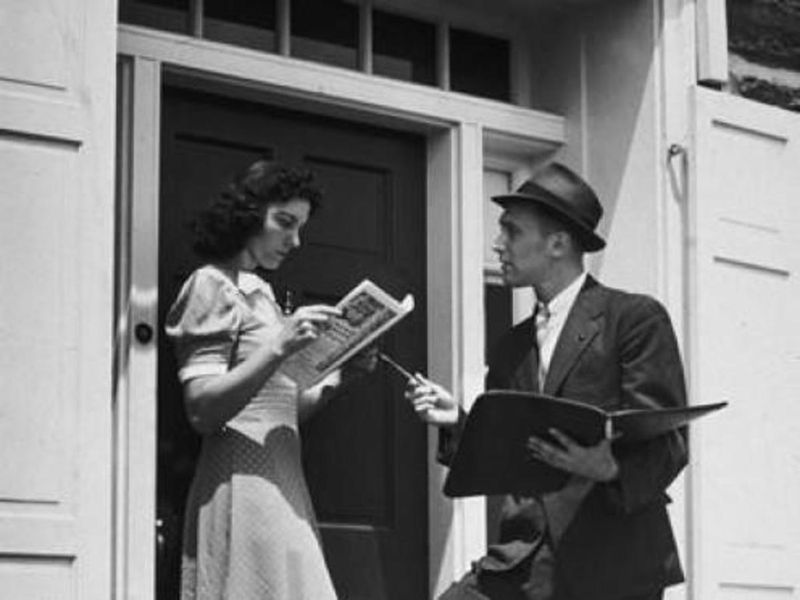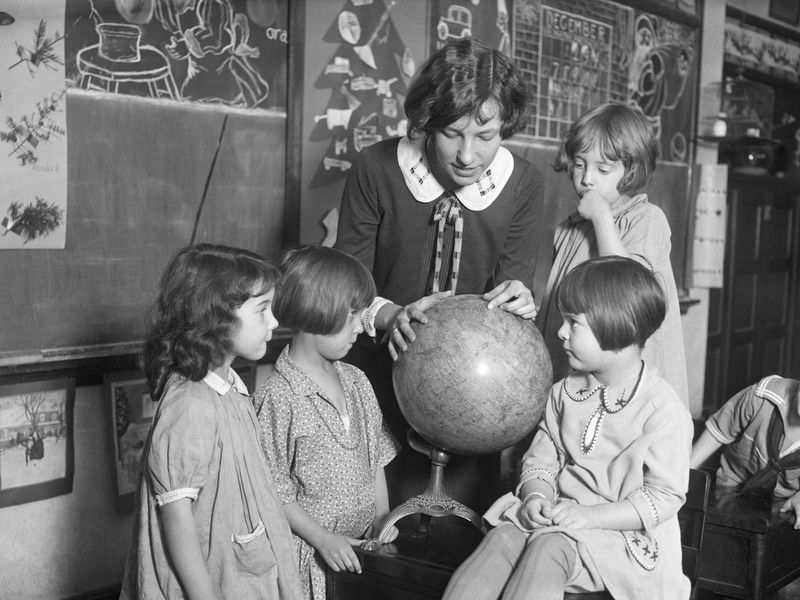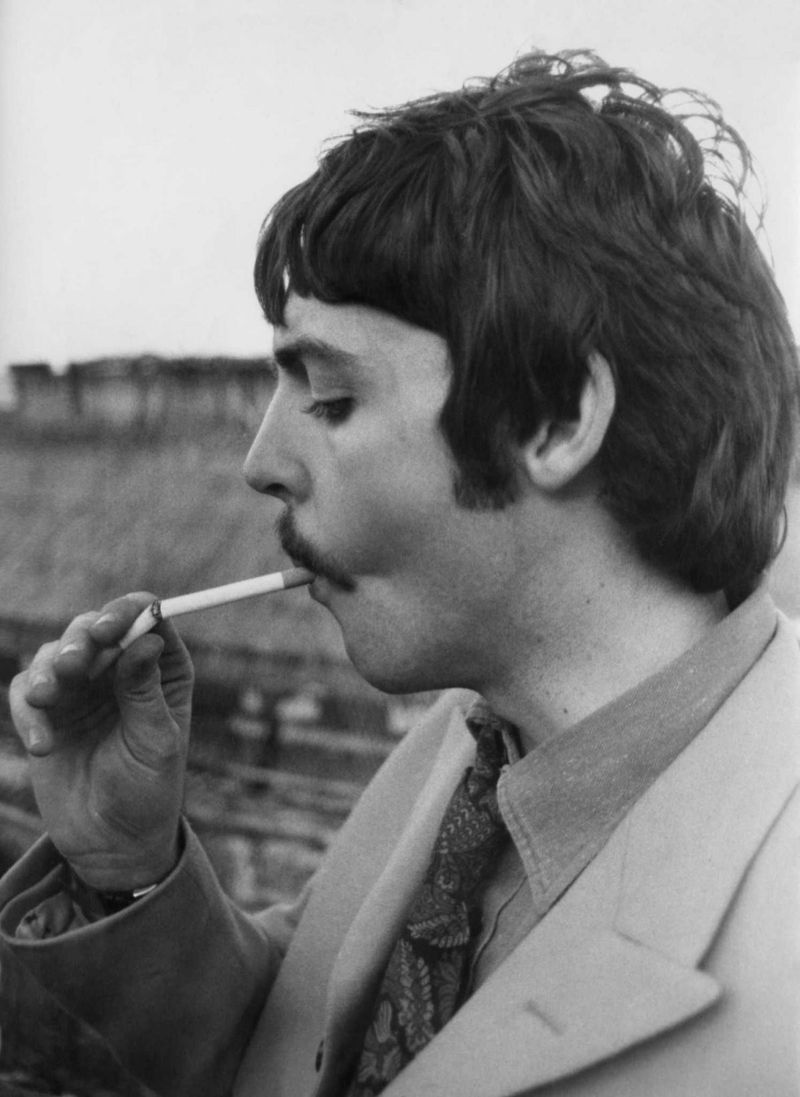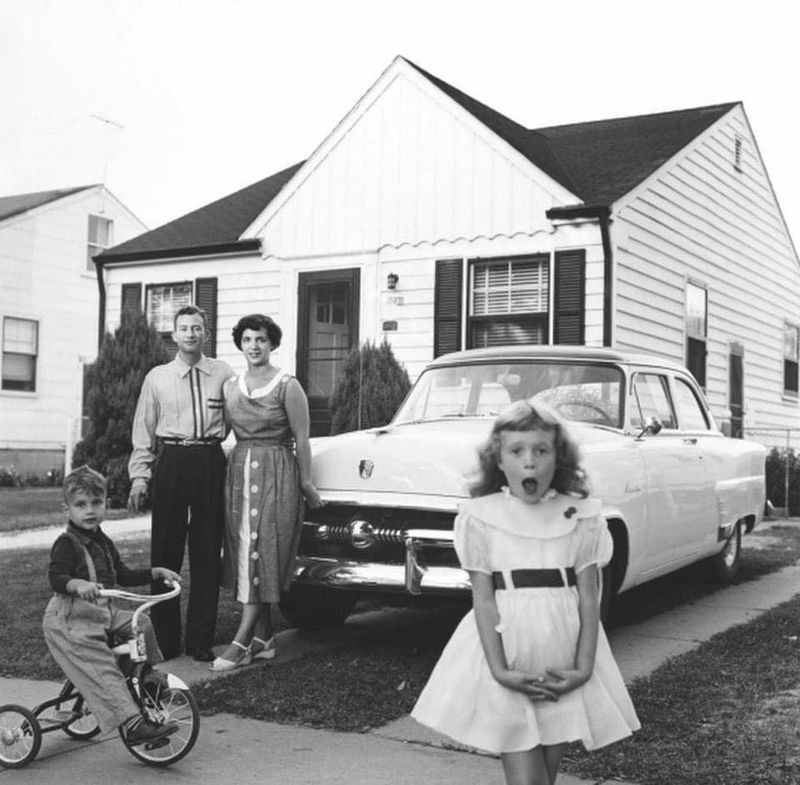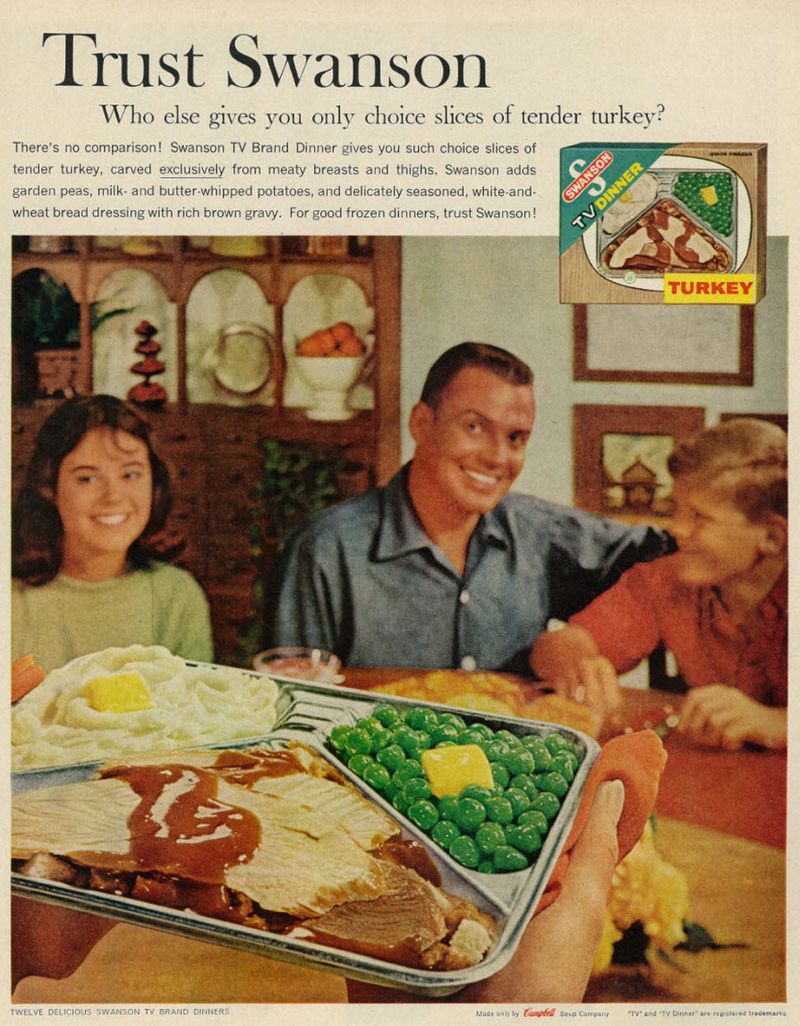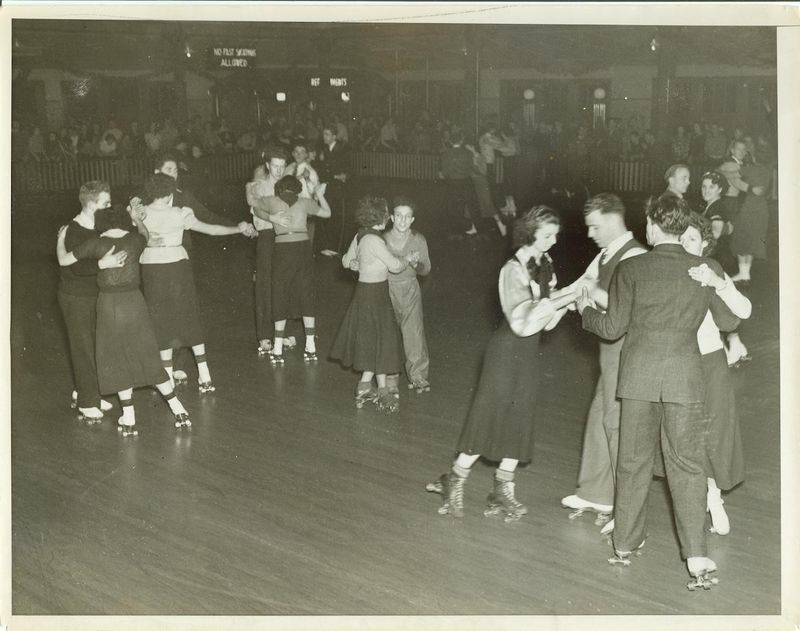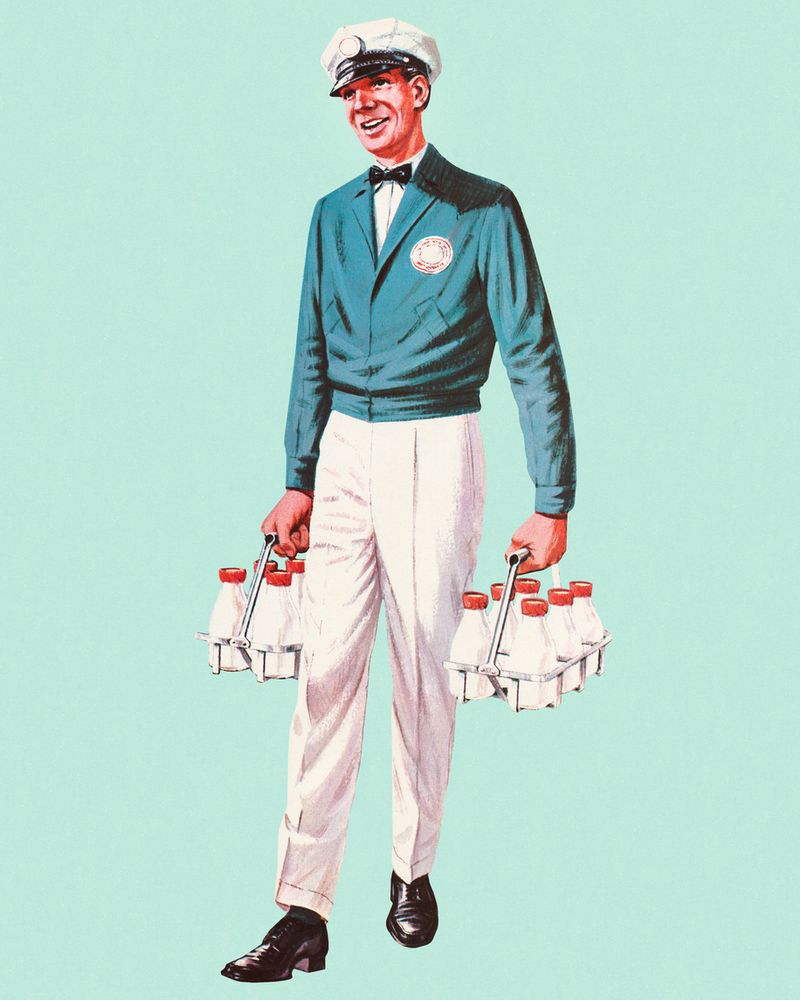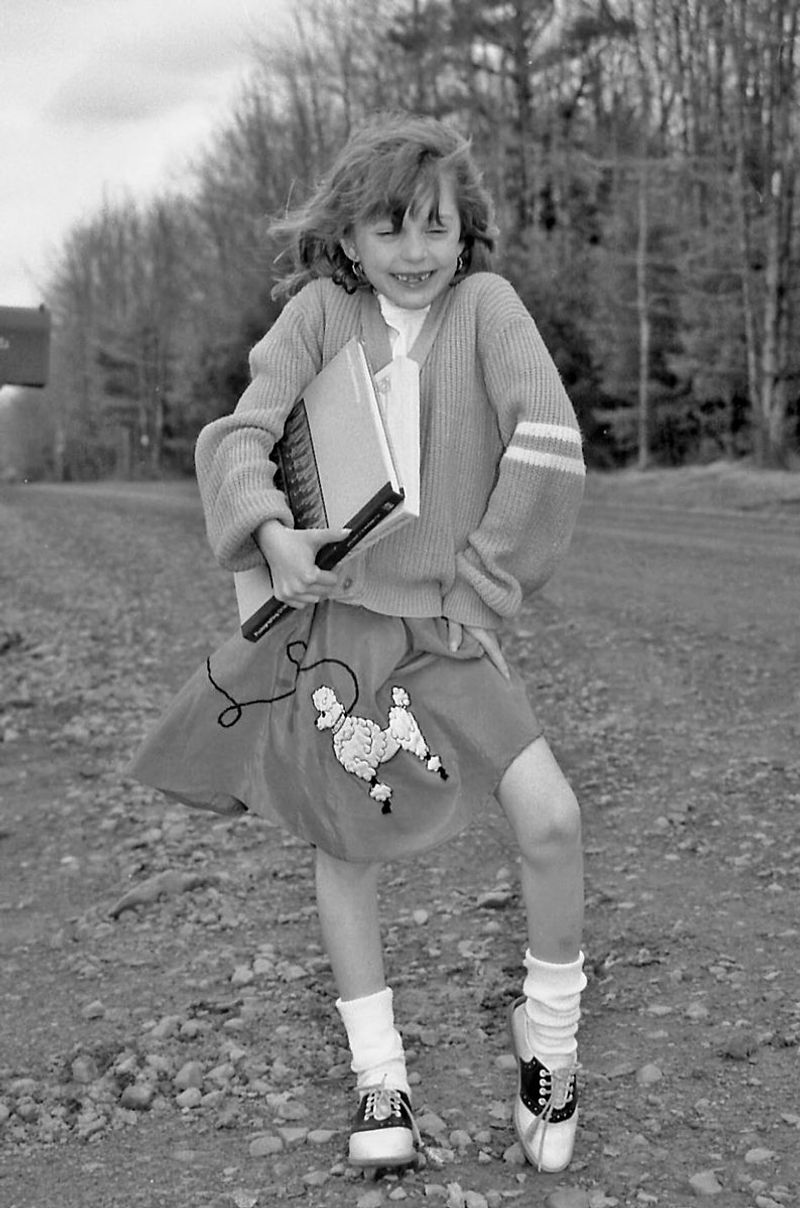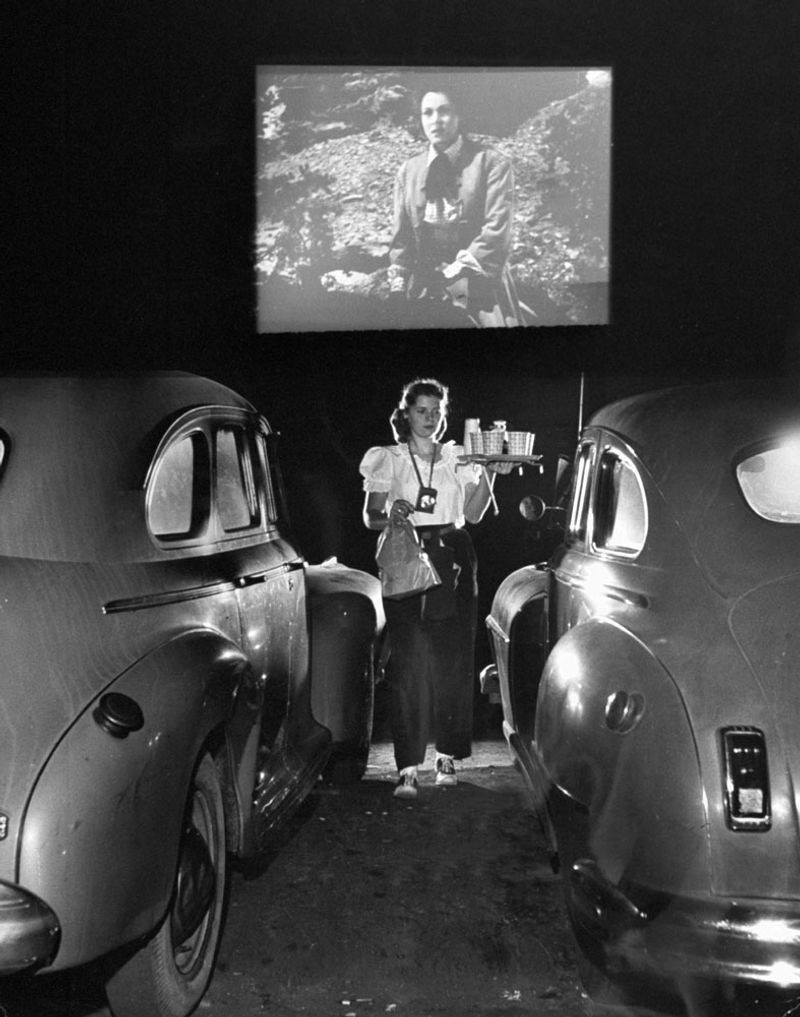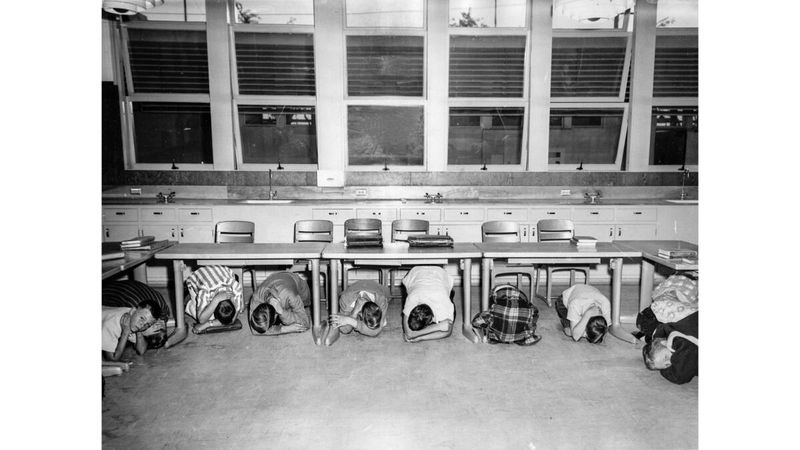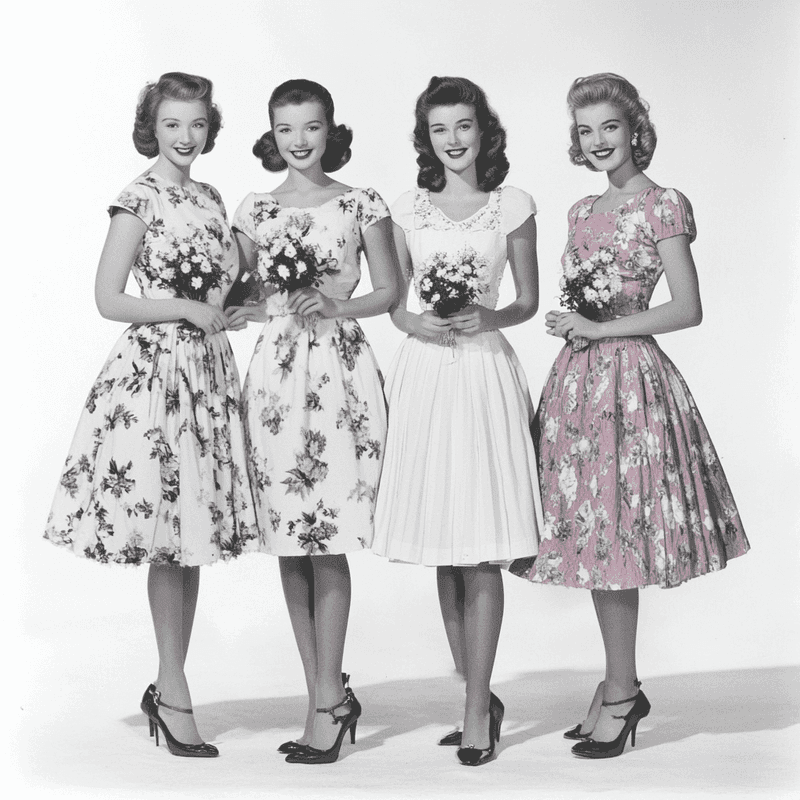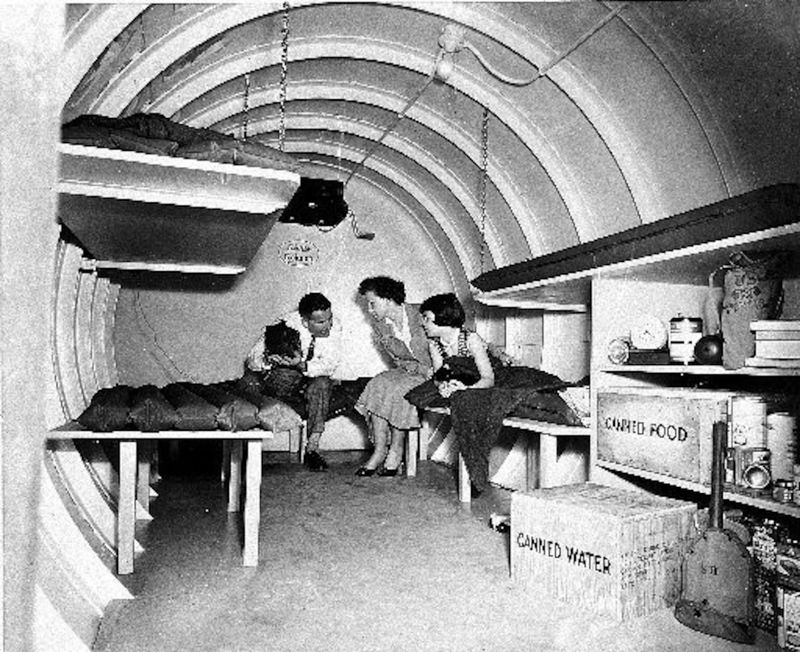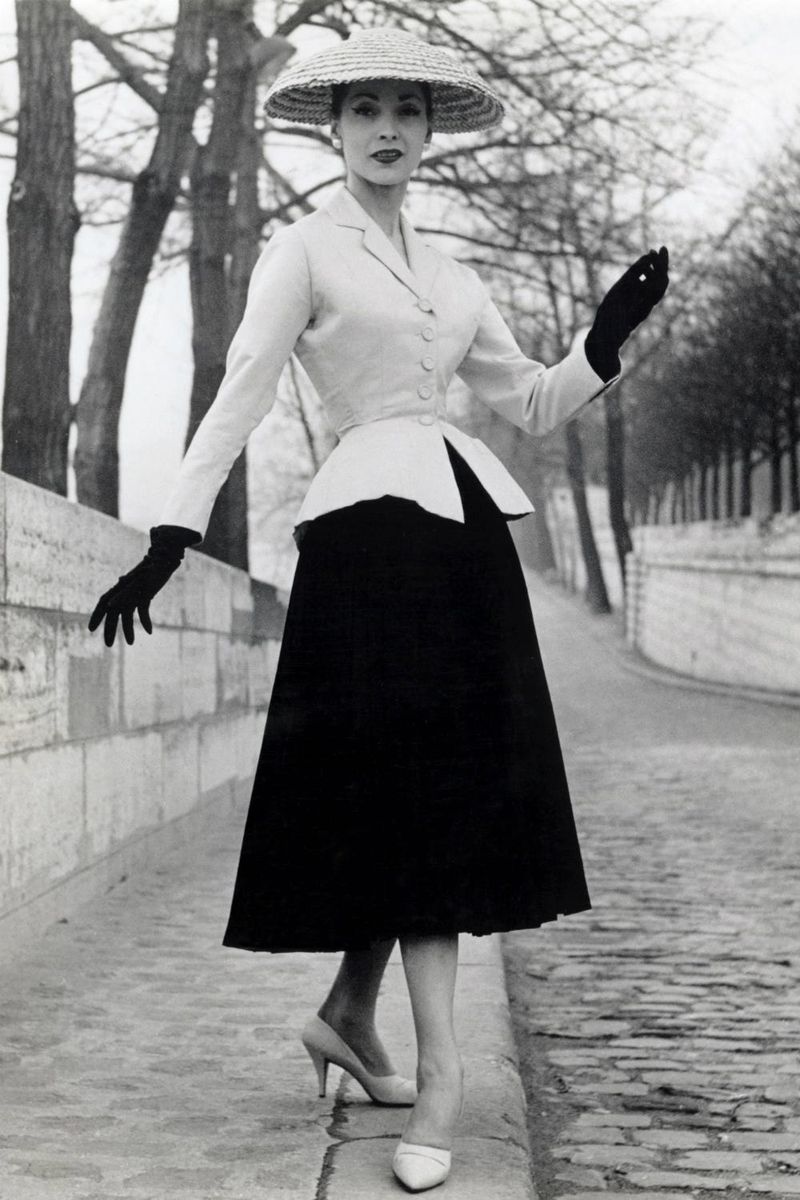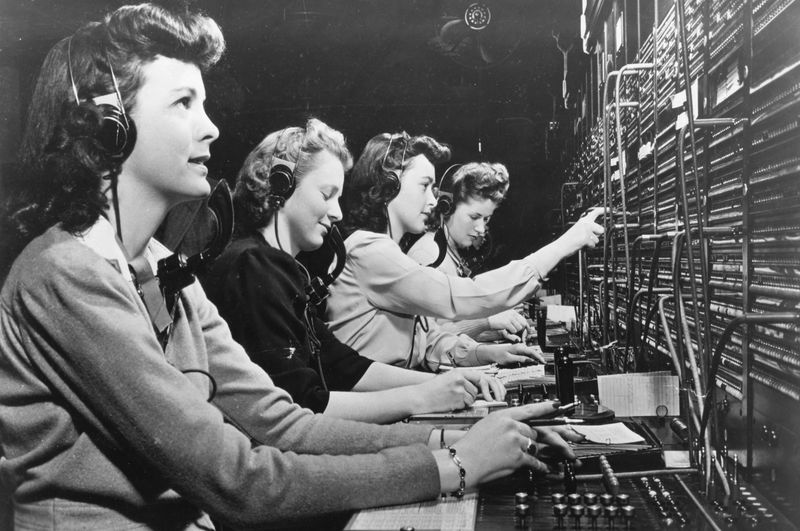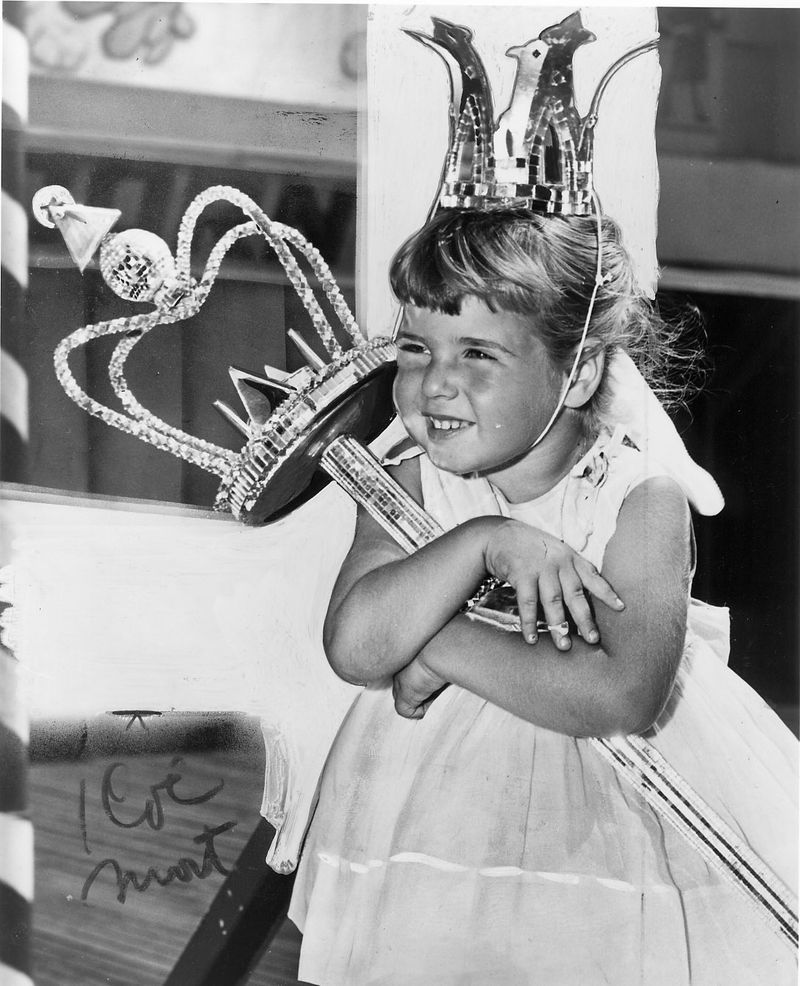The 1950s, often romanticized as a period of simple living and rock’n’roll, was a decade filled with norms that would leave modern society in disbelief.
From the expected to the bizarre, these 15 norms illustrate just how different perspectives were in this post-war era. Let’s explore these peculiar standards that shaped the daily lives of those in the ’50s, both in traditional settings and in the most unexpected ways imaginable.
1. Door-to-Door Salesmen
In an era without online shopping, door-to-door salesmen were a common sight in neighborhoods.
These individuals, often dressed in sharp suits, would knock on doors offering everything from vacuum cleaners to encyclopedias. This practice was not just accepted; it was expected in many communities.
Families would often welcome them in for a demonstration or just a chat. Today, the thought of inviting a stranger into our homes for a sales pitch sounds absurd, but in the ’50s, it was part of the social fabric, fostering a unique personal connection.
2. Gender-Specific Education
During the 1950s, education was sharply divided by gender. Boys were taught practical skills like carpentry and mechanics, while girls focused on sewing and home economics. It was widely accepted that these roles would prepare them for future societal duties.
This educational divide reflected the rigid gender roles prevalent at the time. Today, such clear-cut divisions seem outdated, with both genders encouraged to explore a broader range of subjects.
The shift to more inclusive education symbolizes a move towards equal opportunities for all, challenging the norms of this bygone era.
3. Smoking Everywhere
Cigarettes were a staple of 1950s culture, with smoking permitted almost everywhere. Offices, restaurants, and even hospitals had designated smoking areas. It was seen as fashionable and mature, often endorsed by doctors in advertisements.
The pervasive smoke-filled environments were a normal part of daily life. Contrast this with today’s strict no-smoking policies, and it’s hard to imagine such widespread acceptance.
Public awareness about health risks has drastically changed perceptions, making this past norm almost unimaginable in our contemporary world.
4. Nuclear Family Ideal
The nuclear family was the epitome of success in the 1950s. A working father, homemaking mother, two children, and a dog were symbols of the American Dream. This structure was more than a norm; it was a cultural expectation.
Deviation from this model was often frowned upon. In contrast, today’s society embraces diverse family structures, with single-parent households and blended families becoming more common.
This shift highlights how the concept of family has evolved, respecting individual choices and the complexities of modern life that were absent in the ’50s.
5. TV Dinners
TV dinners revolutionized mealtime in the 1950s, offering convenience to busy families. These pre-packaged meals allowed families to eat in front of the television—an exciting prospect at the time.
It changed how people interacted during meals, placing focus on entertainment rather than conversation.
While this might seem commonplace today, the novelty was shocking back then. The introduction of this norm symbolized changes in family dynamics and leisure activities.
Today, with a focus on homemade meals and mindful eating, the idea of regular TV dinners seems quaint and nostalgic, rather than revolutionary.
6. Roller Rink Dates
Roller rinks were the ultimate date spot for teenagers in the 1950s. These venues, filled with music and colorful lights, were hotspots for socializing and romance. Young couples would spend their evenings skating hand in hand, a scene epitomized in many movies of the era.
While roller rinks still exist today, their popularity has waned. The idea of a date at a roller rink has been replaced by more modern venues, such as coffee shops or movie theaters. Yet, the charm and simplicity of this pastime continue to evoke nostalgia for a simpler time.
7. Milk Delivered to Doorsteps
In the 1950s, milkmen were a regular part of suburban life, delivering fresh milk directly to your doorstep in glass bottles. This practice was both a convenience and a social ritual, with many families forming friendly relationships with their milkmen.
Today, the image of a milkman seems almost fantastical, with supermarkets and online deliveries replacing this daily service.
The shift away from home-delivered milk reflects broader changes in supply chains and consumer habits, illustrating the modernization of everyday conveniences that were once taken for granted.
8. Poodle Skirts
The iconic poodle skirt was a fashion staple for teenage girls in the 1950s. These full, swing skirts, often featuring a poodle applique, were worn with bobby socks and saddle shoes. They were synonymous with youth culture and dance parties.
Today, poodle skirts are mostly seen in costume parties or retro-themed events. The fashion trends of the ’50s, with their emphasis on femininity and playfulness, have given way to more diverse styles. Yet, the poodle skirt remains an enduring symbol of a vibrant period in American fashion history.
9. Drive-In Theaters
Drive-in theaters were the pinnacle of entertainment in the 1950s. Families and couples would pack their cars with snacks, park in front of a giant screen, and enjoy the latest films from the comfort of their vehicles. It combined the thrill of cinema with the privacy of your car.
Although a few drive-ins still exist, they are now a nostalgic rarity. The experience has been largely replaced by multiplexes and streaming services, but for those who lived through it, drive-ins symbolize a unique blend of community and entertainment that modern venues struggle to replicate.
10. Duck and Cover Drills
Duck and cover drills were a common occurrence in schools during the 1950s, reflecting the era’s Cold War anxieties. Students were taught to hide under desks in the event of a nuclear attack. While intended to provide safety, it also highlighted the pervasive fear of the time.
Today, such drills are seen as ineffective against nuclear threats but serve as a stark reminder of the past.
Modern drills focus on different emergencies, showcasing how safety protocols have evolved to address contemporary concerns, moving away from the nuclear fear that defined the mid-20th century.
11. Housewives in Pearls and Heels
The image of a perfect housewife, complete with pearls and heels, epitomized the 1950s ideal of domestic bliss. Women were expected to maintain immaculate homes while looking elegant, reflecting societal values of the time.
This expectation of appearance and demeanor extended beyond home management to include hosting and socializing. Fast forward to today, the concept of a housewife has drastically changed, with many women balancing careers and family life.
The rigid standards of the ’50s have been replaced by more flexible roles, celebrating individuality and breaking free from outdated stereotypes.
12. The Cold War Paranoia
The Cold War era was marked by intense paranoia and fear of nuclear conflict. Families were encouraged to build bomb shelters in their backyards and stockpile supplies. Government propaganda fueled this sense of impending doom, affecting daily life.
Today, the idea of constructing a personal bomb shelter seems extreme and unnecessary. While geopolitical tensions still exist, the pervasive fear of nuclear annihilation has diminished.
This shift underscores a change in public consciousness, moving towards a more nuanced understanding of global politics and away from the black-and-white thinking that dominated the Cold War.
13. Conformity in Fashion
In the 1950s, conformity in fashion was the norm for both men and women. Men wore gray flannel suits and fedoras, while women donned dresses with cinched waists and neat hairstyles. This uniformity reflected broader societal pressures to fit in.
Today, fashion celebrates individuality and personal expression, with a plethora of styles and trends.
The rigid conformity of the ’50s seems stifling in comparison, showcasing how cultural attitudes towards fashion have evolved, embracing diversity and creativity rather than uniform adherence to a single standard.
14. Manual Phone Exchanges
Before the era of smartphones, manual phone exchanges were a critical part of communication in the 1950s. Operators, mostly women, would connect calls by plugging cables into a switchboard, a process both labor-intensive and essential.
This system required a personal touch, with operators often recognizing regular callers by voice. The advent of automated systems has made such roles obsolete, highlighting the technological leaps that have drastically transformed communication.
The personal connections once forged through manual exchanges have been replaced by digital interactions, reflecting wider shifts in how we connect with each other.
15. Beauty Pageants for Toddlers
Beauty pageants for toddlers were a surprising trend in the 1950s, with children paraded in formal wear and judged on appearance and poise. These events were popularized by societal values that prized beauty and competition.
Today, the ethics of child pageants are often questioned, with concerns over the pressure and expectations placed on young participants.
The shift away from such contests reflects a growing awareness of childhood development and self-esteem, promoting a healthier environment for children that values personality and talent over superficial beauty.
